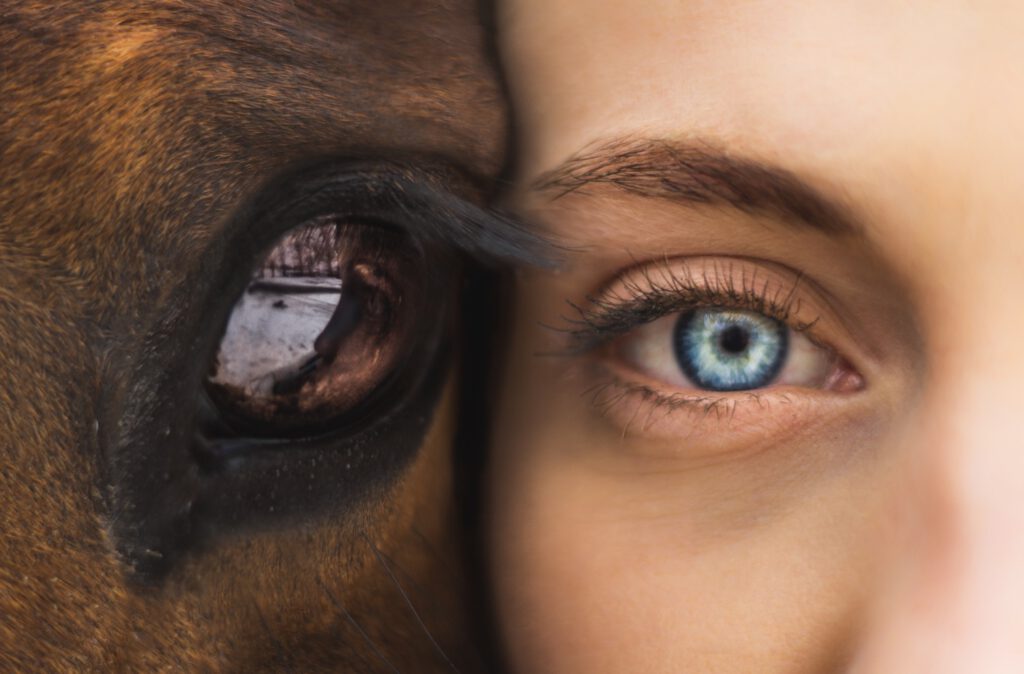A disease is said to be contagious when it is transmitted from a sick horse to a healthy horse, directly or indirectly, by animal vectors. Contagious diseases of the horse are numerous, and the main ones are bacterial or viral. Their severity depends on the outcome of the disease but also on their contagious nature. Therefore, as in other domestic species, the legislator has made some of them legally deemed contagious and are therefore subject to special regulations, allowing better intervention during epidemics and during commercial transactions.

Even if some of them have not been observed on our territory for many years, their seriousness by their important contagious character explains the fact that they are still registered on an extensive list. These are rabies, anthrax, glanders, dourine, African horse sickness, epizootic lymphangitis, vesicular stomatitis, surra, viral meningo-encephalomyelitis (American, Japanese, and Venezuelan), contagious metritis and infectious anemia. A simple cough can sometimes be a sign of a more serious illness.
Influenza, strangles, rhino-pneumonia and viral arteritis in horses
Influenza is a disease of the respiratory system caused by two specific types of viruses. Clinically, it is expressed by a severe febrile syndrome accompanied by respiratory signs dominated by a strong, hacking cough, most often dry and hoarse at the beginning. It is an extremely contagious disease which in a group of horses eventually reaches all the horses. The evolution of the disease is favorable under correct hygienic conditions, in one to three weeks, during which rest is imperative. Complications can nevertheless occur superinfections of the upper respiratory system (sinusitis, bronchitis) and deep respiratory system (bronchopneumonia), cardiac forms can explain fortunately rare deaths, as well as interstitial pneumonia. The treatment may involve antibiotic drugs to fight or prevent superinfections, anti-inflammatory drugs, and bronchodilators; in all cases, the environmental conditions are a major concern by trying to put the horses in a dust-free, not too humid environment with good air renewal. As horses are contagious during the first days of the disease, isolation should be recommended. Prevention can be done, depending on the problem, by ultrasound and endoscopy.
Strangles in horses
Strangles is a bacterial disease, contagious, often encountered in young horses, due to streptococci. It has several clinical forms; strangles is the main one: after a short period of hyperthermia, an angina appears suddenly, accompanied by a significant increase in the size of the lymph nodes in the trough area. Soon enough, a purulent discharge is observed from the nostrils and is accompanied by abscessation of the lymph nodes at the same time as the temperature returns to normal. Numerous loco-regional complications can occur infections of the sinus cavities (sinusitis) or purulent collections in the guttural pouches (empyema), but also lesions of certain nerves that control the muscles of the larynx leading to paralysis of the latter (see cornification). Other complications such as arthritis, tenosynovitis, bronchopneumonia, skin, or subcutaneous lesions have also been described as well as the classic local superinfections after castration which prohibit this surgical act in a population where this disease is rampant. Finally, there can be much more insidious forms, leading to a progressive alteration of the general state with weight loss when internal abscesses are formed. In general, with local or systemic treatment (using antibiotics such as penicillin) and the application of general hygienic measures of isolation and disinfection, the disease disappears in a few weeks depending on the case, but it can take longer. Surgery may be necessary in some cases.
Rhino-pneumonia in horses
Rhino-pneumonia is a disease well known to breeders because it is a frequent cause of abortion in mares. It is a viral disease in which the responsible agents (several types of viruses) can persist in the organism and to reawaken during events such as stress or certain physiological stages (gestation). Depending on the type of virus, abortions are observed in mares that have been infected for a long time: these are late abortions, after the seventh month of gestation, which usually do not cause any problems; it is essential in such circumstances to call the laboratory to take the samples necessary for the diagnosis. Sometimes the foal is born prematurely, and stillbirth is reported. Other types cause respiratory disorders that are usually unnoticeable because they are not important; nevertheless, an infection of the bronchopulmonary system can be observed. Finally, a nervous form may occur, leading to paralysis and sometimes even the impossibility for the horse to stand; when the decubitus lasts several days, the prognosis is poor. Therefore, this disease is of significant importance in breeding and must be the object of rigorous medical and sanitary prevention according to the epidemiology (see hygiene and prophylaxis) and one must remember the character of the responsible agents to be able to persist in the organism and to reawaken on certain occasions.
Viral arteritis in horses
Viral arteritis is also a viral disease, also called typhoid fever. It causes febrile respiratory problems but also abortions; it often leads to edema of the legs or scrotum. Stallions are the vectors of the disease and can remain chronically infected. Except for severe septicemic forms, recovery is usually observed within two weeks.
Salmonellosis in horses
A final contagious disease can occur in numbers: salmonellosis. It is due to the pathogenic action of bacteria (salmonella). After a short febrile syndrome, a profuse and very liquid diarrhea mixed with blood appears, leading to an important dehydration and a state of shock. Death can occur within twenty-four to thirty-six hours in the absence of treatment, the basis of which is rehydration. This digestive disease is highly contagious and there are also healthy carriers who can excrete the pathogen from time to time, which explains the occurrence of this disease in certain populations. Symptoms can sometimes lead to a skin disease.


